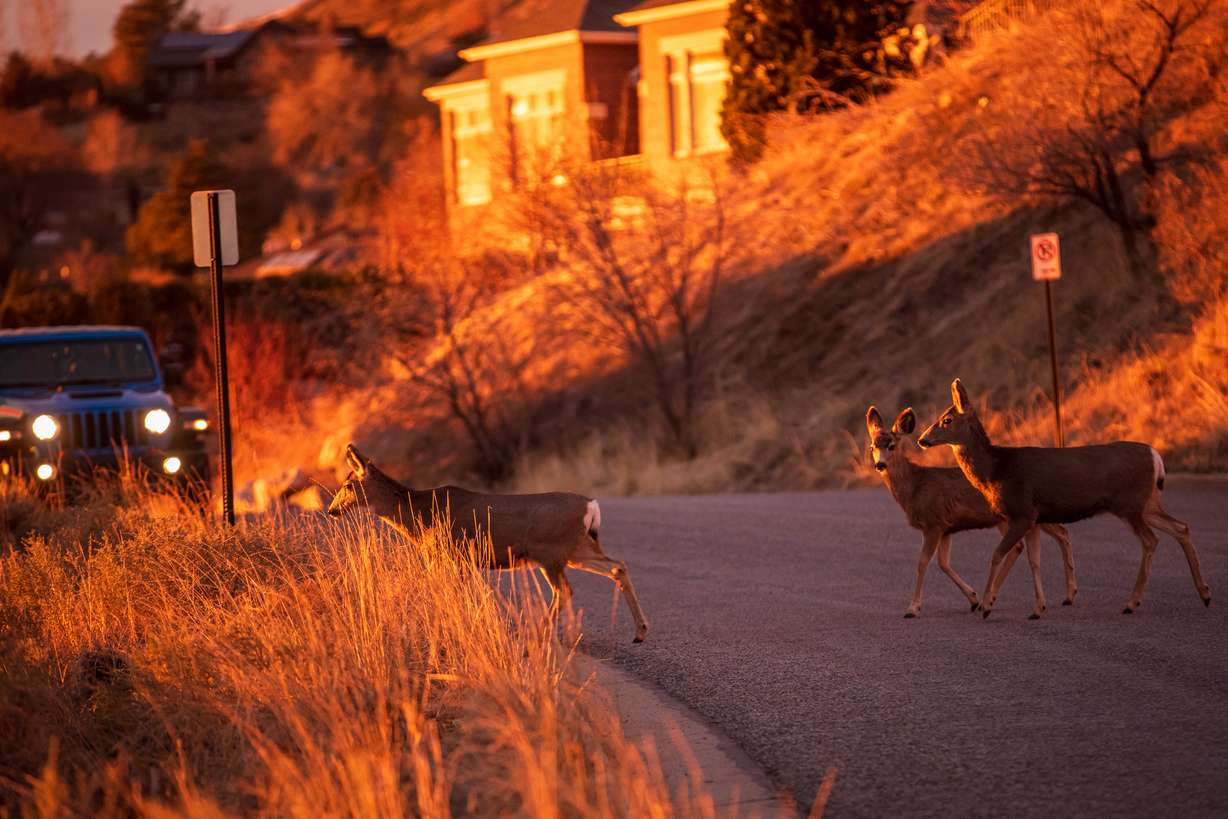- Utah's mule deer population remains below target, dropping from 376,450 in 2018 to 295,200 this year.
- Utah Division of Wildlife Resources officials are seeking public input to reverse the decline.
- A series of public meetings seek to generate potential solutions.
SALT LAKE CITY — Utah's mule deer population typically ebbs and flows, but Dax Mangus says it has felt more like a downward spiral recently.
The state's deer population dropped from about 376,450 in 2018 to as low as 279,000 a few years ago. Despite some population increase since, this year's estimated population of 295,200 is still nearly 110,000 deer short of the statewide goal.
It's an issue that's played out all over the western United States.
"If you look at mule deer — not just in Utah, but across the West — there's periods of growth and periods of decline, and there's these peaks and valleys. One of the things that is concerning is it feels like the peaks and the valleys are getting lower over time," said Mangus, big game coordinator for the Utah Division of Wildlife Resources. "Today's highs aren't as high as the highs were a couple of decades ago."
The Utah Division of Wildlife Resources created a new statewide management plan last year that aims to revive populations; however, the agency is now seeking outside help in reversing the deer decline. Specifically, it's asking anyone with an idea that could help to speak up.
State wildlife officials plan to hold nine public meetings across Utah over the next month. The meetings will be used to generate new project ideas and plans that could help increase deer populations.
"Although we have put forth a lot of effort into growing mule deer and have conducted a lot of research on what is causing declines in deer populations, this is not something we can do alone," adds Riley Peck, the division's director.
Why are deer populations in decline?
Mule deer are a tricky species to manage because a lot of factors contribute to population decline and recovery, but that also makes them a good indicator of environmental health because their challenges mirror several other species, Mangus explained to KSL.com.
Extreme weather or climate events, habitat conditions, predator balance and human interactions have all contributed to the species' more recent slide.
Utah's extreme drought from 2020 through early 2023, which ended with a record statewide snowpack, was a double-whammy for deer populations, he said. Drought impacts the species by gradually reducing food and habitat options in wild spaces, ultimately leading to deaths from malnutrition. The record snowpack that saved the state from drought also produced large-scale die-offs, prompting some emergency feeding measures at the time.
It's still too early to know how current drought conditions may factor into future estimates, but both of these challenges also made deer more vulnerable to being preyed on by cougars, coyotes, bears and other predators.

The state's human growth creates additional challenges. Construction removes deer habitats, and there have also been more vehicle-collision deaths. Fences and roads can also disrupt deer migration patterns.
Seeking solutions
Some of these constraints are out of the state's control, but some of them can be overcome through careful planning. Wildlife overpasses and habitat restoration projects are some ways federal, state and local experts have gotten involved.
"What we can do is try to develop in a drought-resistant habitat. We can try to protect our winter ranges and maximize summer nutrition on units that are winter-limited," Mangus said. "We try to do everything we can within our power to help deer."
That's where the public comes in. Most of the Wildlife Resources' public meetings are specifically about hunting permits, which are generally set by buck-to-doe ratios — a stat that hasn't been as burdensome over the past few years. The series of meetings planned between July 31 and Aug. 28 will differ by focusing more on the overall deer population, he said.
Utah deer population public meeting schedule
- Thursday, July 31: Willard City Multi-Purpose Building, 80 W. 50 South in Willard, from 6-8 p.m.
- Tuesday, Aug. 12: Price DWR Office, 319 N. Carbonville Road in Price, from 6-8 p.m.
- Thursday, Aug. 14: Hideout Community Center, 648 S. Hideout Way in Monticello, from 6-8 p.m.
- Thursday, Aug. 14: Amber Room of the Mountain America Museum of Ancient Life at Thanksgiving Point, 2929 Thanksgiving Way in Lehi, from 6-8 p.m.
- Thursday, Aug. 14: Charles R. Hunter room of the Hunter Conference Center at Southern Utah University, 405 W. University Blvd. in Cedar City, from 7-8:30 p.m.
- Monday, Aug. 18: Sevier County Administration Building, room B46 — 250 N. Main Street, Suite 101, in Richfield — from 7-8:30 p.m.
- Wednesday, Aug. 20: Ruby's Inn, 26 S. Main Street in Bryce Canyon, from 7-8:30 p.m.
- Tuesday, Aug. 26: Roosevelt Library, 50 N. 200 West in Roosevelt, from 6-8 p.m.
- Thursday, Aug. 28: Uintah Conference Center, 313 E. 200 South in Vernal, from 6-8 p.m.
He figures those who recreate or "actively engage" with deer habitat, or have expertise in areas where deer struggle, may have solutions that can help. The division is exploring partnerships with cities, counties, organizations or other groups that could spark changes that help deer populations.
Meetings are slated for all over the state because many of the challenges and solutions could differ from region to region within the state.
"What we'd like to do is ... see if there are areas or projects that folks from the public feel passionate about," Mangus said. "(We want to) identify those types of situations and find ways to work together to do good things to grow deer."









